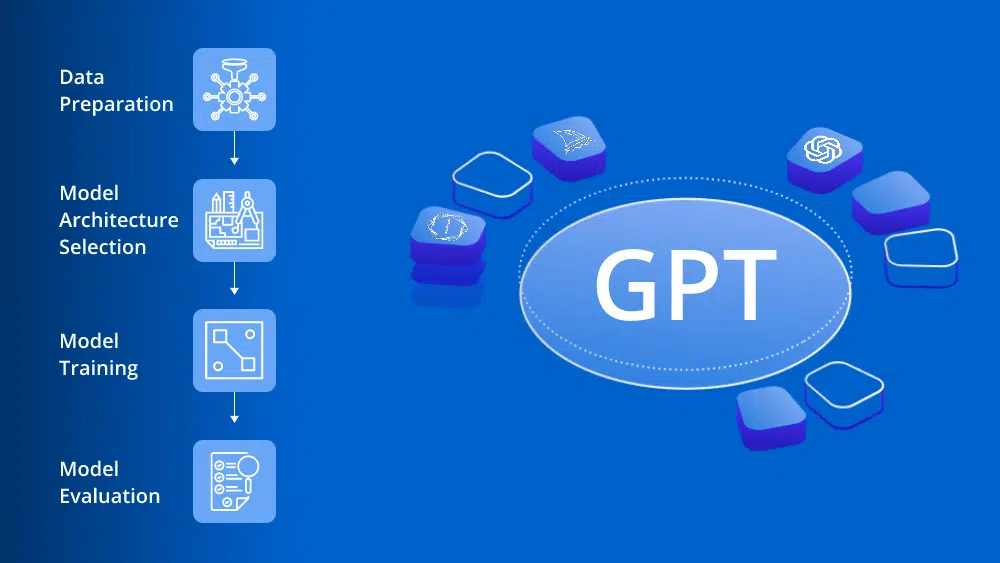An Overview of GPT Models: The Big Power Behind Generative AI
GPT (Generative Pre-trained Transformer) models are at the forefront of artificial intelligence, revolutionizing how machines understand and generate human language. Developed by OpenAI, these models have set new benchmarks in natural language processing (NLP), enabling AI to generate text, translate languages, answer questions, and even write code. Here’s a detailed look at what GPT models are, how they work, and their impact on AI.

What Are GPT Models?
GPT models are part of a class of machine learning models based on transformers, a type of neural network architecture introduced in 2017 by researchers at Google. Unlike previous models, transformers allow for much more efficient parallelization, enabling them to scale up and process massive amounts of data.
GPT models are pre-trained on large datasets, learning the intricacies of human language, syntax, and even contextual meaning from this data. After pre-training, the models can be fine-tuned for specific tasks, such as chatbot interaction, content creation, or even technical support, making them versatile tools for a wide range of applications.
How Do GPT Models Work?
At the core of GPT models is a process known as unsupervised learning. The models are trained on a large corpus of text without any human-labeled data, which allows them to learn language patterns and associations autonomously. After pre-training, they can generate human-like responses based on the input they receive.
The architecture behind GPT models is built around transformer layers. Transformers use a mechanism called attention that allows the model to weigh the relevance of different words in a sentence when predicting the next word, making GPT models particularly good at understanding context. This structure is essential to generating coherent, contextually appropriate text, even in complex tasks like summarization or question answering.
Evolution of GPT Models
- GPT (2018): The first version of GPT was groundbreaking, setting the stage for later developments. It demonstrated the ability to generate human-like text but was limited in its scope and scale.
- GPT-2 (2019): GPT-2 marked a major leap forward. With 1.5 billion parameters, it significantly improved language generation, prompting discussions about AI safety due to its ability to create convincingly realistic text.
- GPT-3 (2020): The release of GPT-3 was a landmark event in AI. With 175 billion parameters, GPT-3 is one of the largest and most powerful language models ever created. It can perform a wide range of tasks with minimal fine-tuning, including writing articles, generating code, and answering complex queries.
- GPT-4 (2023): As the latest in the series, GPT-4 has even more advanced capabilities. It is more efficient, handles nuanced queries better, and supports multimodal inputs (text and images), widening its application in diverse fields.
Applications of GPT Models
The potential applications of GPT models are vast, impacting industries such as:
- Content Creation: GPT models can generate blog posts, news articles, and even creative writing, often indistinguishable from human-produced content.
- Customer Support: Many companies use GPT-powered chatbots to interact with customers, answering questions and solving problems efficiently.
- Coding: GPT models, especially GPT-4, can generate programming code based on natural language descriptions, making them valuable for software development.
- Language Translation: GPT models are highly effective at translating between languages, often with a deep understanding of idiomatic expressions and cultural context.
Limitations and Ethical Concerns
While GPT models have impressive capabilities, they also raise concerns. For instance:
- Bias: GPT models can perpetuate and even amplify biases present in the data they are trained on. This can lead to inappropriate or biased responses.
- Misinformation: Due to their ability to generate realistic text, GPT models can be used to spread misinformation, whether intentionally or accidentally.
- Ethical Use: As AI models become more advanced, questions about the ethical use of AI, including data privacy, accountability, and the impact on jobs, continue to grow.
The Future of GPT Models
The evolution of GPT models points toward even more powerful AI systems in the future. With advancements in computing power and the availability of more diverse datasets, future GPT models may become integral to more industries, improving human-machine collaboration. The challenge lies in ensuring that these powerful tools are used responsibly and ethically.
In conclusion, GPT models represent a significant breakthrough in AI, transforming how machines interact with human language. As these models continue to evolve, they will likely play an even more significant role in the future of AI, opening doors to innovations we can only imagine today.


the idea that GPT is leading AI to new heights and may even become the benchmark for future AI GPT models. GPT’s main function is to generate human-like text based on input, whether for answering
an encoder and decoder stack, which processes input data and generates output effectively. However, GPT models typically use only the decoder stack, focusing on text generation